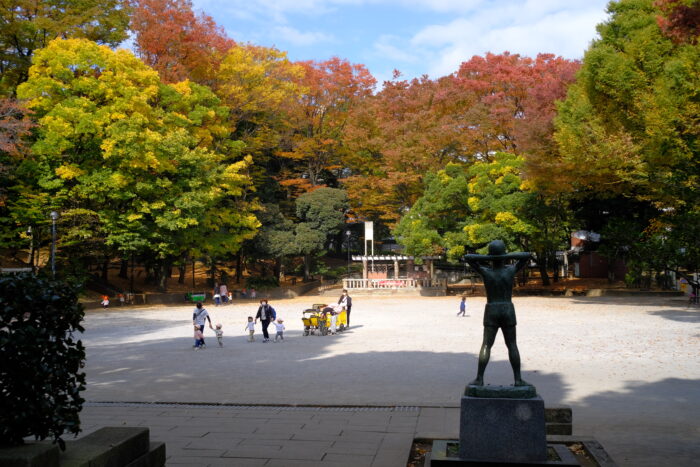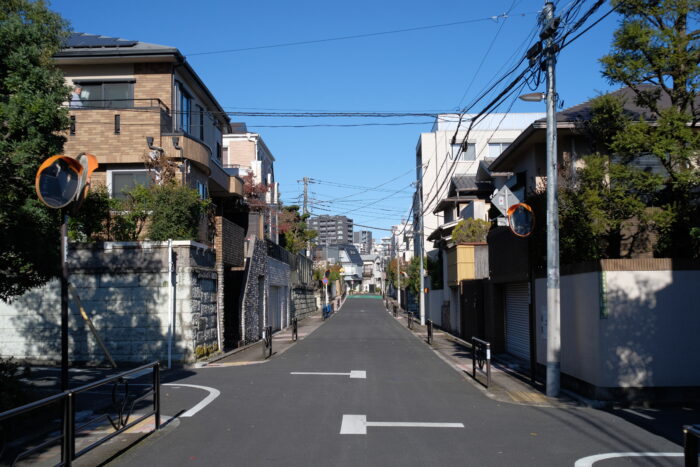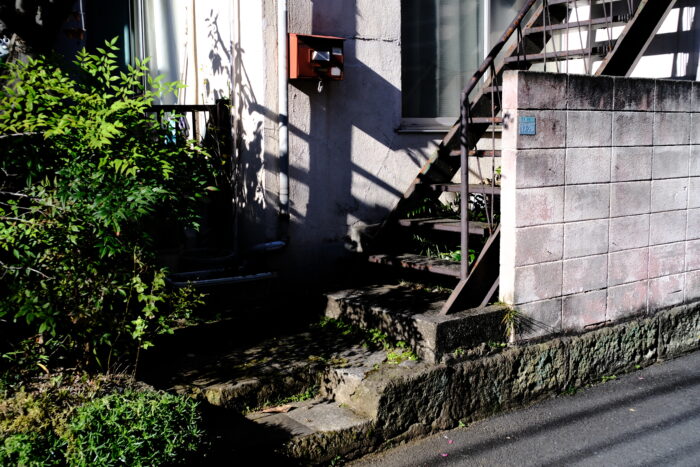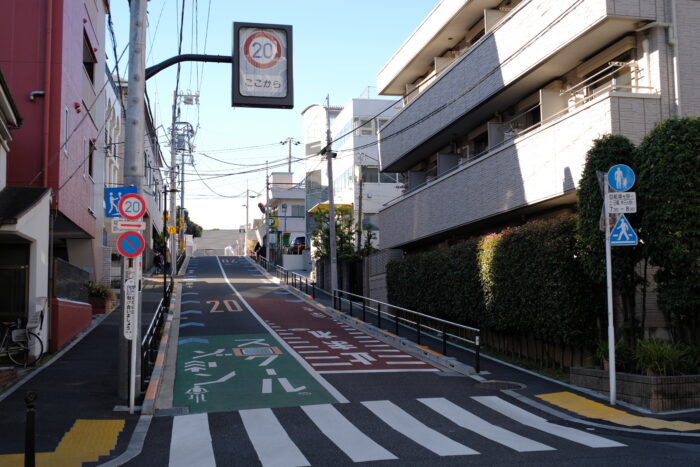Most of the Japanese under 60 years old experienced getting up early and going to a nearby park to join a radio gymnastic gathering on summer vacation from elementary school. This park is said to be the origin of such radio gymnastic gathering, and the monument of a boy doing radio gymnastics stands on the stage. Before the park was built in 1928, the Tokyo City Poorhouse established by Eiichi Shibusawa (the figure on the new JPY 10,000 bill) was located on this place.

Fujifilm X-Pro2 / Carl Zeiss Biogon T* 2.8/28 ZM
You can find relatively large houses on a ground owned by Daimyo (feudal lord) before the Meiji Restoration in 1868 and developed as a residential area in Taisho or early Showa period (1912 – 1941).

Fujifilm X-Pro2 / Carl Zeiss Biogon T* 2.8/28 ZM
Compared to a Daimyo Yashiki (feudal lord residence) area, you can find relatively small houses and narrow alleys on a former farmland, which sometimes presents its distinctive beauty.

Fujifilm X-Pro2 / Carl Zeiss Biogon T* 2.8/28 ZM
This slope was named “Kaiun-zaka” (good-luck slope) by Jigoro Kano (1860-1938), the “Farther of Judo” and the “Farther of Physical Education” in Japan. His house was located on the top of the slope and the judo training hall next to his house is said to be the birthplace of women’s judo.

Fujifilm X-Pro2 / Carl Zeiss Biogon T* 2.8/28 ZM
prev 18 Otsuka / next 20 Sengoku
Return to Central Tokyo, North